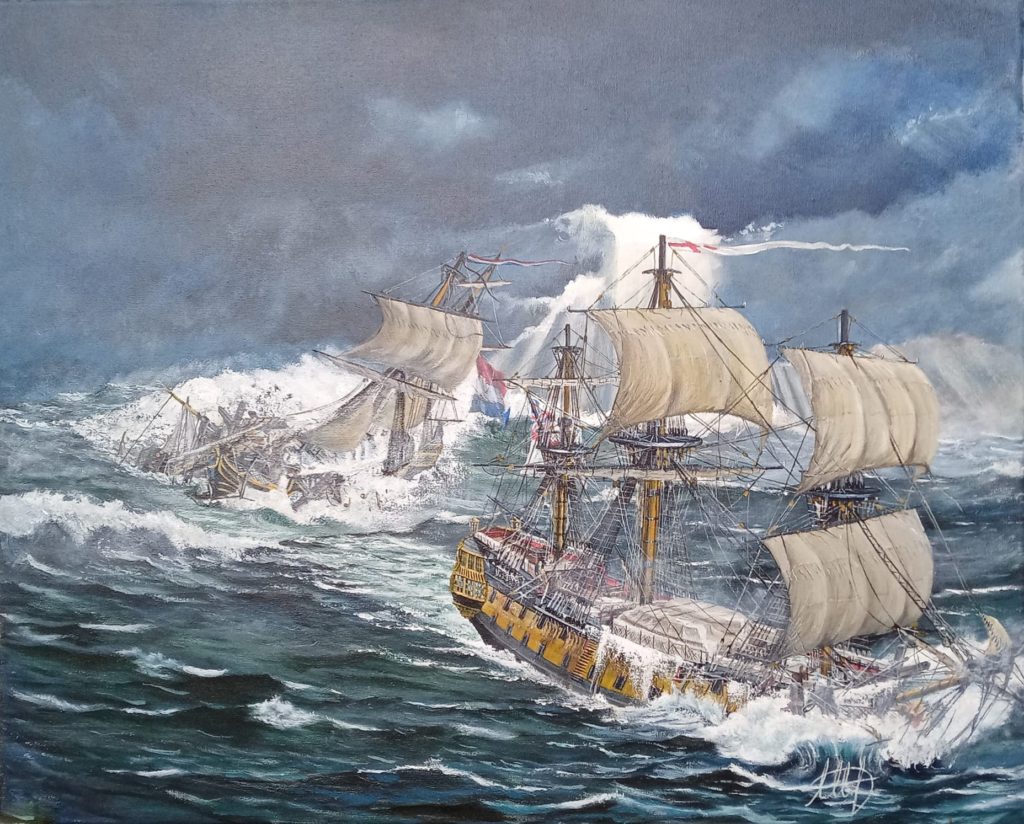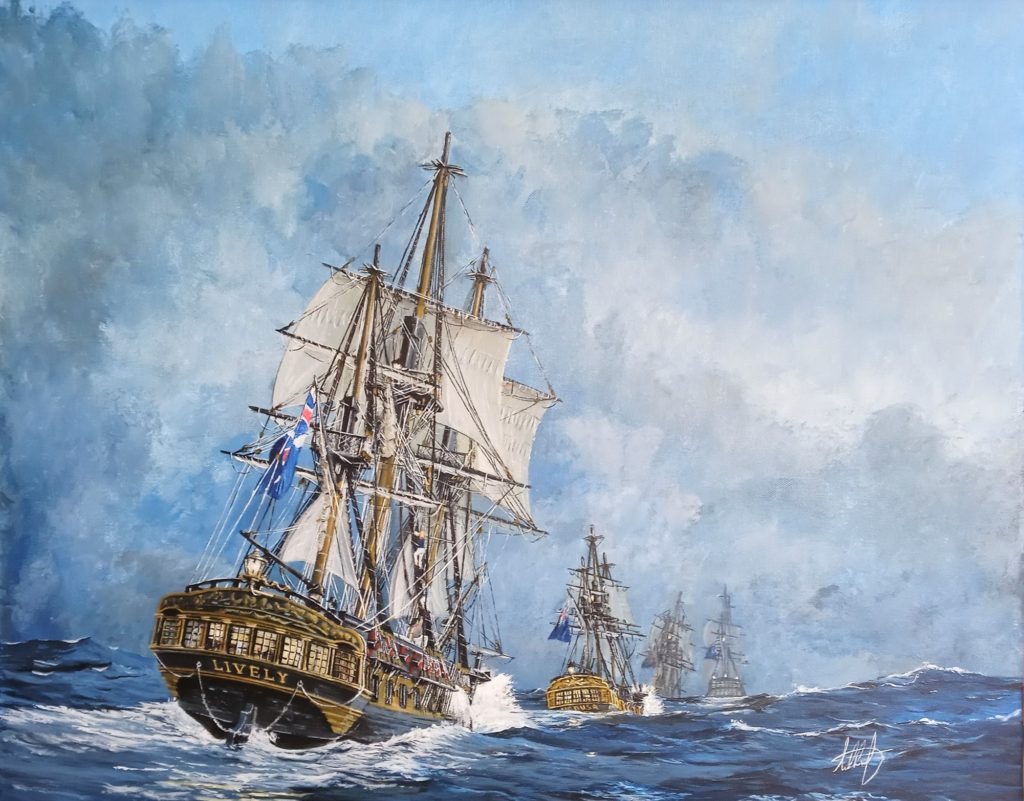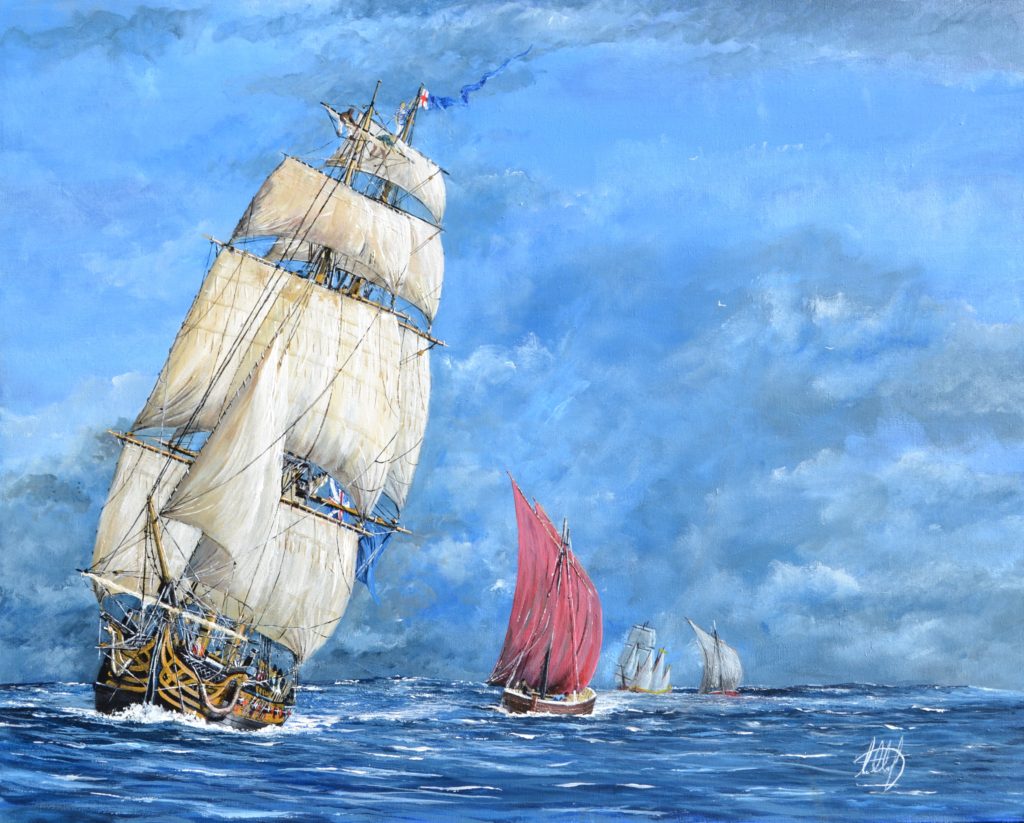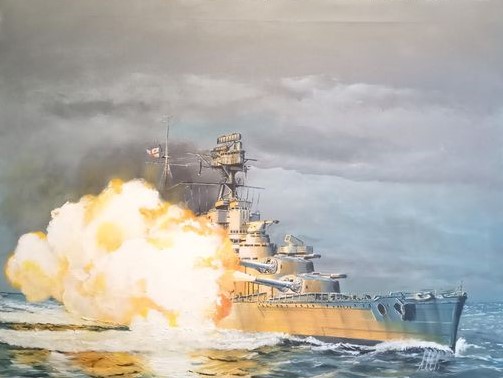HMS Shannon and USS Chesapeake painting of when they fought a naval action on June 1st, 1813. It was described afterward as probably the Bloodiest single Frigate action of its time.
Search Results for: ships
HMS Leopard has a lucky escape in the Southern Ocean after a long desperate chase by a Dutch 74 gun, man o war. Throughout history, there have been eleven Royal Navy ships carrying this name. This one was built in 1790. She was a Portland-class, fourth-rate ship carrying 50 guns. HMS Leopard served during both the
HMS Lively, the 1804 ship. She was a 38 gun fifth rate frigate of the Royal Navy. HMS Lively was also the prototype of the Lively class of 18-pounder frigates designed by Sir William Rule, Surveyor of the Navy.
These ships were the most successful British frigates built during the Napoleonic wars, 15 more were ordered in the subsequent years. The Captains and crew adored their sailing qualities when fully stored. It’s been said that after barrels became empty, they would fill them with salt water to maintain their weight, thereby keeping her sailing abilities.
HMS Lively, the 1804 ship. She was a 38 gun fifth rate frigate of the Royal Navy. HMS Lively was also the prototype of the Lively class of 18-pounder frigates designed by Sir William Rule, Surveyor of the Navy.
These ships were the most successful British frigates built during the Napoleonic wars, 15 more were ordered in the subsequent years. The Captains and crew adored their sailing qualities when fully stored. It’s been said that after barrels became empty, they would fill them with salt water to maintain their weight, thereby keeping her sailing abilities.
HMS Lively, the 1804 ship. She was a 38 gun fifth rate frigate of the Royal Navy. HMS Lively was also the prototype of the Lively class of 18-pounder frigates designed by Sir William Rule, Surveyor of the Navy.
These ships were the most successful British frigates built during the Napoleonic wars, 15 more were ordered in the subsequent years. The Captains and crew adored their sailing qualities when fully stored. It’s been said that after barrels became empty, they would fill them with salt water to maintain their weight, thereby keeping her sailing abilities.
HMS HOOD Firing a full Broadside of her main armament. I wanted to go outside of my comfort zone and try to capture the action as the guns fire. The speed of the main explosion, the intense force leaving the barrels while at the same time the shockwave hits the surface of the sea.
HMS Hood was sunk during the Battle of the Denmark Straite in May of 1941. 80 Years ago HMS Hood, the pride of the Royal Navy was sunk within minutes, leaving behind only 3 survivors.
I have never seen a good photograph of her firing her main armament. This consisted of eight 42 calibre BL 15-inch Mk1 Guns in four Hydraulically powered twin turrets. They were capable of firing 1920-pound shells up to a max distance of 30,180yrds.
My main inspiration came from seeing other large warships firing and lighting up the sky. I wanted to capture the split second when this happened. The ship changing from shades of Grey to Shades of Orange and Yellow, just for a split second before the flames gave way to thick smoke. Most paintings of warships are dark by nature, I aimed to have a creation full of colour this time. I’m happy with the result.
HMS HOOD Firing a full Broadside of her main armament. I wanted to go outside of my comfort zone and try to capture the action as the guns fire. The speed of the main explosion, the intense force leaving the barrels while at the same time the shockwave hits the surface of the sea.
HMS Hood was sunk during the Battle of the Denmark Straite in May of 1941. 80 Years ago HMS Hood, the pride of the Royal Navy was sunk within minutes, leaving behind only 3 survivors.
I have never seen a good photograph of her firing her main armament. This consisted of eight 42 calibre BL 15-inch Mk1 Guns in four Hydraulically powered twin turrets. They were capable of firing 1920-pound shells up to a max distance of 30,180yrds.
My main inspiration came from seeing other large warships firing and lighting up the sky. I wanted to capture the split second when this happened. The ship changing from shades of Grey to Shades of Orange and Yellow, just for a split second before the flames gave way to thick smoke. Most paintings of warships are dark by nature, I aimed to have a creation full of colour this time. I’m happy with the result.





